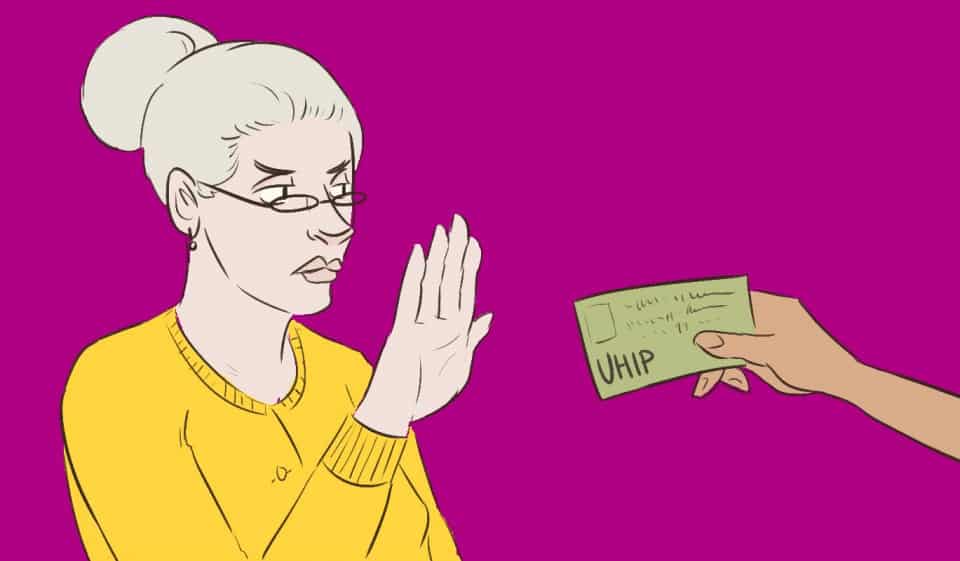Katrina Chiu, a fourth-year University of Toronto student, visited a doctor following a referral from Health Services only to be told that she did not actually have health insurance. Chiu claims that her 2013–2014 University Health Insurance Plan (UHIP) was mysteriously cancelled.
Health expense claims denied
International students in Ontario receive health care coverage via UHIP.
Despite mimicking the coverage of the Ontario Health Insurance Plan (OHIP), international students are asked to pay out of pocket at many of the city’s hospitals. The UHIP insurance provider, Sun Life, then reimburses them after they file a claim detailing the service they received and the amount it cost.
“They file the claims every January, and everything from 2013 got denied,” Chiu said. “They told my doctor that I did not have health coverage. To this day they haven’t provided a response.”
International students are required to carry medical insurance while studying at U of T through UHIP at a cost of over $600 a year.
Chiu’s doctor phoned Sun Life to enquire about the status of her insurance, but did not receive an answer as to why Chiu did not have coverage.
“I got in contact with the UHIP office and they referred me to Sun Life,” Chiu said. “Every time I called Sun Life I couldn’t get through. My doctor’s office called the UHIP office and they referred them to Sun Life too.”
“I couldn’t go see my doctor for three months because technically I owed him literally thousands of dollars,” Chiu stated.
Althea Blackburn-Evans, director of news & media relations at U of T, said that losing UHIP mid-year is rare and the only reason it could happen is if a student is registered in the fall but not in the winter term; if they are academically suspended, but even then a grace period is offered; if the student takes a leave of absence, or if they withdraw mid-year. However, Chiu does not fit into any of these categories.
The doctor that Chiu saw is part of the Preferred Provider Network (PPN), a conglomerate of hospitals that take UHIP up front; therefore, she did not lose any money out of pocket.
Karla Dawn, an international student who graduated from U of T’s Faculty of Architecture in 2015, was referred to a hospital that was not in the PPN and was forced to pay out of pocket.
“Health Service doctors are focused on making referrals that represent the best fit from a medical perspective and in the majority of the cases those referrals will be to a preferred provider,” Blackburn-Evans said.
Dawn said that, since she was never instructed on how to file a claim with Sun Life, she was never reimbursed even though she has health insurance.
“So many international students don’t use their UHIP because they don’t understand how it works,” Dawn said. “It’s really a money making venture.”
Figuring out how health insurance works
Dawn’s main issue is that she did not know where to turn when she ran into problems. She said that she does not remember ever receiving information on the extent of UHIP’s coverage and was instead forced to navigate the system herself.
Chiu claims that after spending so much time trying to understand how her health insurance works, she too has forgone filing claims for medical expenses.
“The university is committed to ensuring international students have easy access to healthcare and healthcare coverage. Staff at the UHIP offices, located on all three campuses, provide support to students — identifying preferred providers and helping to expedite claims when necessary,” said Blackburn-Evans.
Blackburn-Evans explained that all international students are automatically enrolled in UHIP from September 1 to August 31.
UHIP and student status
Although UHIP does not cover prescriptions, all students are enrolled in a supplementary health plan either through the University of Toronto Students’ Union (UTSU) or the Association of Part-time Undergraduate Students (APUS), according to their full-time or part-time student status. The supplemental health coverage includes a drug plan through Green Shield.
The amount paid for supplemental health coverage changes depending on a student’s status as either a part-time or full-time student.
Dawn became a part-time student in her last year of university. She was never informed that her supplemental health coverage would change due to her new student status.
“I don’t think the student should have to be reading their invoice to know which drug plan they have,” Dawn said. “We [international students] fully depend on this coverage, and they never explained it to me at all.”
In her first three years of university, Dawn’s prescriptions were fully covered minus the pharmacist fee. “Before medicine was definitely covered, and if it’s not covered then why is there no option to pay for supplemental insurance? Why do we have less coverage than domestic students?”
Full-time students receive a 0 per cent copay under the UTSU Green Shield plan, whereas part-time students receive a 10 per cent copay under the APUS Green Shield arrangement.
Dawn was unaware that her prescription drugs were not covered under UHIP and said that no one told her how international student health coverage works in Canada.
She believes part of the problem is that U of T’s administration is not properly trained in policies that affect international students, and that U of T does not do an adequate job of informing international students about their health coverage. Dawn argued that, unlike domestic students, international students are completely new to this system and need more help understanding it.


